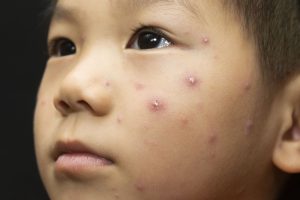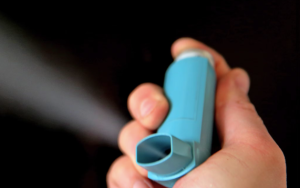As parents, we want our children to grow up healthy and strong. However, as much as we try to protect them from harm, children are still susceptible to common childhood diseases. In Singapore, several illnesses can affect children, so let’s take a look at some of the most common ones and how to prevent and manage them.
 Hand, Foot, and Mouth Disease (HFMD)
Hand, Foot, and Mouth Disease (HFMD)
HFMD is a highly contagious viral illness that primarily affects young children. It is spread through contact with saliva, fluid from blisters, or fecal matter. Symptoms include fever, sore throat, and blisters on the hands, feet, and mouth. According to a study published in the International Journal of Infectious Diseases, Singapore experiences seasonal outbreaks of HFMD, with the highest incidence occurring from May to July. However, proper hygiene practices such as frequent handwashing and disinfecting surfaces can help prevent the spread of the disease.
Chickenpox


Asthma
Asthma is a chronic respiratory disease that affects the airways, causinginflammation and constriction. While asthma can affect anyone at any age, it is more common in children.
From the Singapore Medical Journal, the prevalence of asthma in children aged 6-7 years old in Singapore is approximately 20.4%. While there is no cure for asthma, proper management and treatment can help control symptoms and improve quality of life for children with asthma.

Preventing Childhood Diseases
Preventing childhood diseases starts with maintaining good hygiene practices, such as frequent handwashing and disinfecting surfaces. Vaccinations also play a crucial role in preventing the spread of childhood diseases. It is important to follow the National Childhood Immunisation Schedule to ensure that children are protected from vaccine-preventable illnesses.
In conclusion, while common childhood diseases can be a cause of concern for parents, understanding their prevalence and taking preventative measures can help protect children and improve their health outcomes. Through continued research and education, we can work towards a future where childhood diseases are a thing of the past.
If you’re struggling with any of the above-mentioned, please don’t hesitate to speak with your doctor about it – there’s nothing wrong with seeking professional advice! If you would like to speak with one of our doctors, please contact us today!
Read our other articles here.
- IGAKUhttps://igaku.co/blog/author/igaku/
- IGAKUhttps://igaku.co/blog/author/igaku/
- IGAKUhttps://igaku.co/blog/author/igaku/
- IGAKUhttps://igaku.co/blog/author/igaku/


